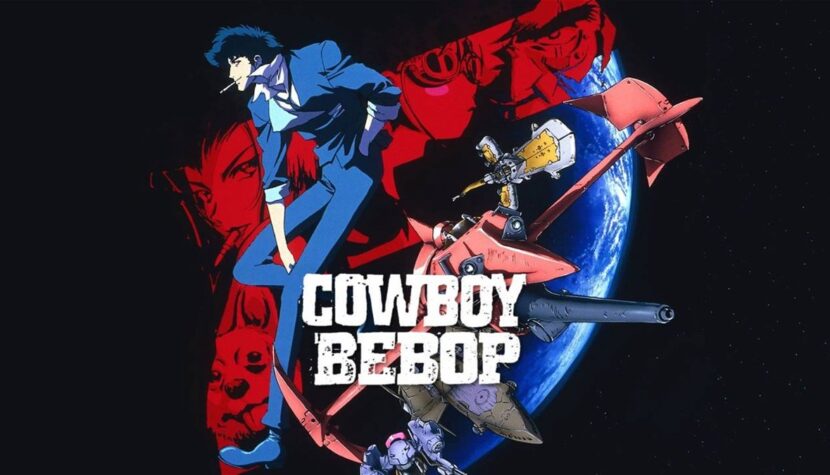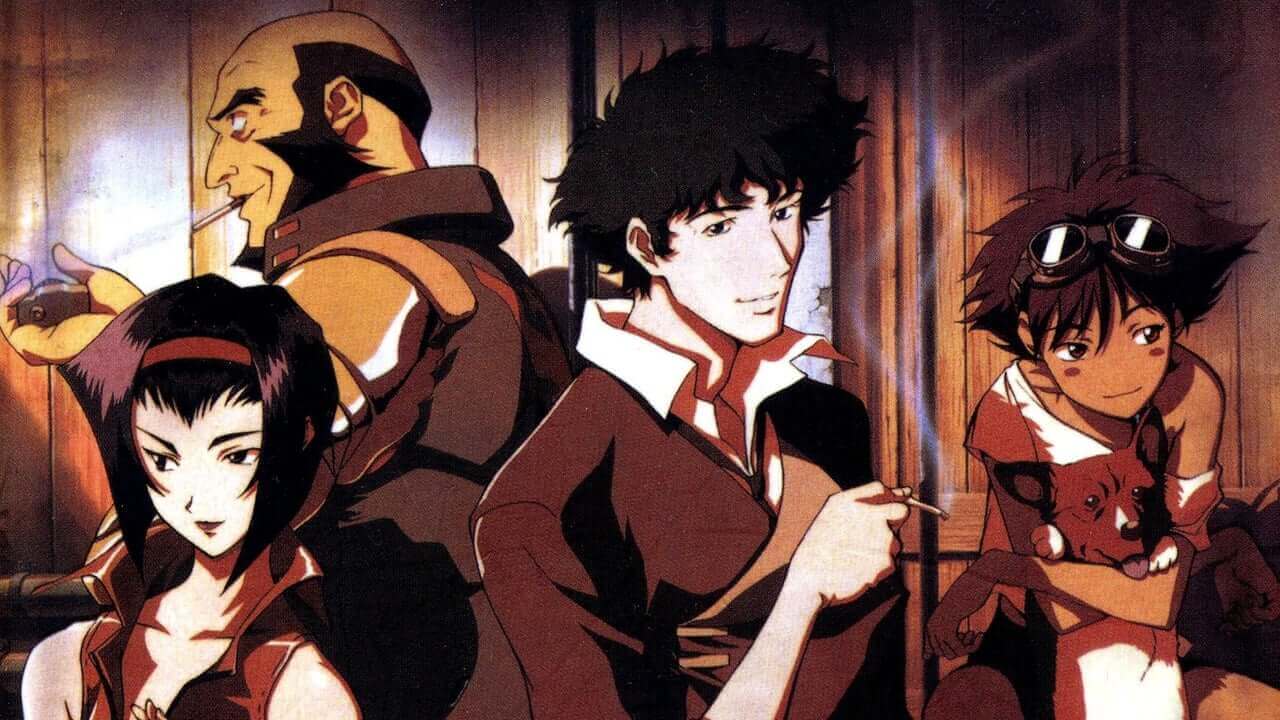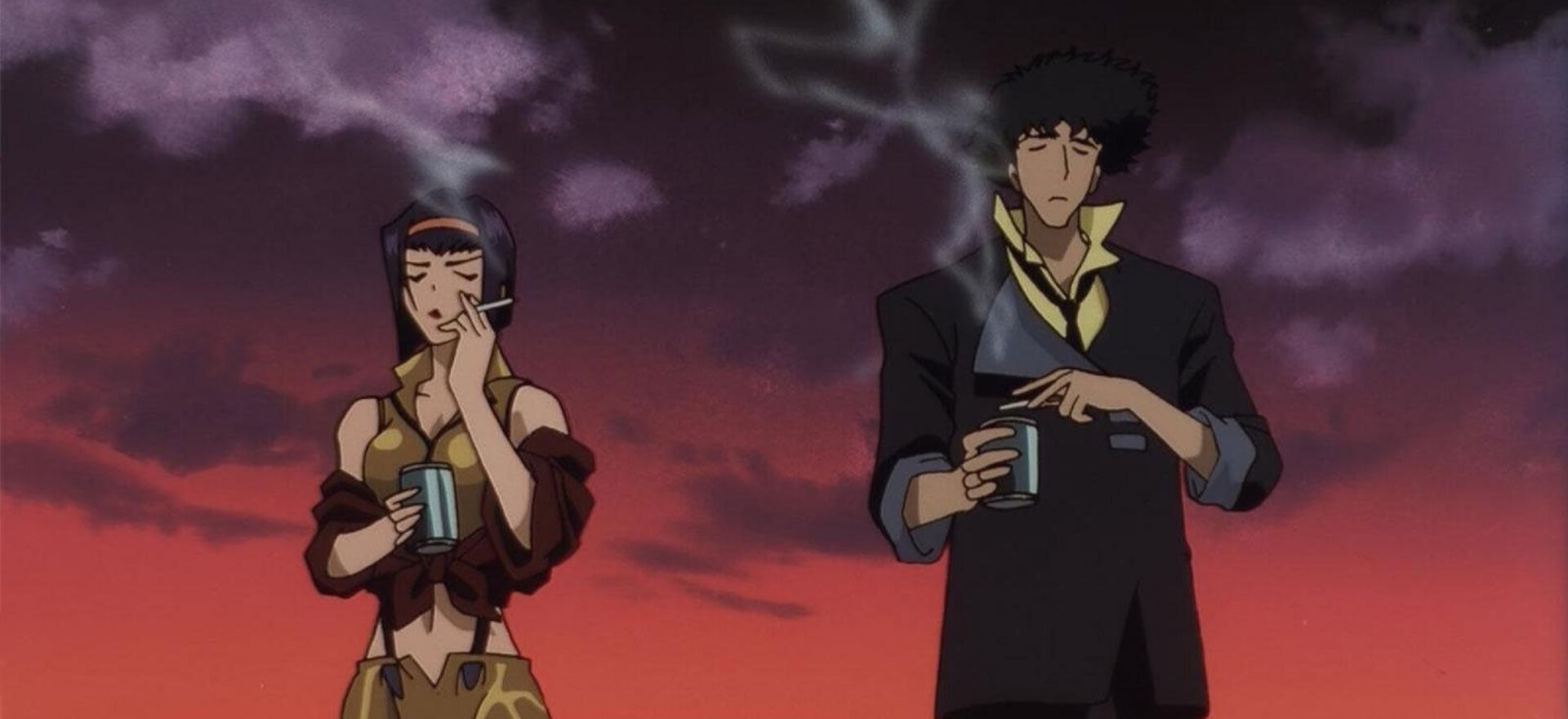COWBOY BEBOP. Unique science fiction anime

I guess anyone even slightly interested in Japanese animation has heard of the famous Cowboy Bebop. And if not, they should be ashamed because even among those not interested in anime, this production is popular, not least because of its brilliant soundtrack. Regardless of whether someone has heard of it or not, Cowboy Bebop is an animation that’s very original even by anime standards, which can serve viewers with all kinds of genre mishmashes. How does this manifest, and what exactly have Japanese creators prepared for us?
New genre… Cowboy Bebop
The poetics of anime have accustomed us to combining various genre patterns, seemingly incompatible styles, or conventions. However, even in situations where the Japanese completely let their fantasy run wild, specific subgenres of anime have emerged to which a given title can always be assigned. Mechs in ancient times? Romance with elements of horror? Twisted marriages of science fiction with fantasy? These are certainly original works in their own way, but even they are not alone in the vast universe of Japanese animation. The situation is different with the title I’m reviewing because it is a one-of-a-kind position. Inimitable and unique. It is even said that the discussed title created a new genre, and it is called… Cowboy Bebop.

The setting of Cowboy Bebop looks like this: at first glance, it appears to be a space opera because the action takes place in the year 2071 when humanity has managed to colonize Mars and Jupiter’s moons, among other places. People can travel between them using common space gates, which serve as highways. One of the ships that undertakes such journeys is the heavily worn Bebop 268170, on board of which live space bounty hunters: the ship’s owner Jet Black and the main character of the series, Spike Spiegel. Over time, other characters join them: the addicted gambler Faye Valentine, a little girl named Edward, who is a computer hacker, and an exceptionally intelligent dog named Einstein. Apart from more advanced medicine, prosthetics, and colorful holograms, the science fiction elements essentially end there. The design, hairstyles, clothing, and even firearms clearly refer to… the 1970s and American pop culture. Posters referencing that era and ubiquitous cigarettes, the smoke of which you can almost smell, effectively capture the atmosphere of the depicted world. The characters themselves and the conventions of most episodes are blatant references to film noir, of which there are plenty here. In addition, we get a blend of wuxia cinema and several pastiche and parody elements. Cowboy Bebop represents a genre of its own: a 1970s-style space opera in the style of film noir, dressed as an action-comedy. Quite original, isn’t it?
A plot
The plot of the series, consisting of twenty-six episodes, is challenging to summarize and evaluate due to its structure. In simplified terms, it looks like this: the main storyline occupies only five episodes scattered throughout the series. In between them are standalone and self-contained stories. In practice, however, each of these seemingly disconnected side stories aims to create increasingly significant interactions between the characters, initiate and continue their development, and tell the story of each character individually. Often, these episodes are more interesting than the main plot itself. What don’t we see here? Action-packed, crazy tales (Cowboy Funk, Mushroom Samba), personal struggles of the characters and their attempts to confront the past (My Funny Valentine, Speak Like a Child, Black Dog Serenade, Pierrot Le Fou), comedic pastiches of famous films (including Alien in the episode Toys in the Attic), and many more action, humor, and drama-filled episodes.

Compared to these colorful tales, the main plot falls short but doesn’t disappoint. It begins in the fifth episode, Ballad of Fallen Angels, and two more episodes follow along the way. It concludes with the last two episodes, similar to the entire series. It revolves around internal changes in the Red Dragon organization, Spike’s former love, Julia, and the main antagonist in the series, Vicious. I won’t provide spoilers, but I’ll mention what I didn’t like, primarily the villain. Frankly, I can’t help but admire how the creators messed this up, especially considering that all the other characters in the series are very intriguing. Well, all except Vicious. Although the seiyuu Norio Wakamoto who dubbed him is, as always, excellent, he can’t save what the writers messed up. The main villain is painfully classic, predictable, almost caricatural. His motivation is so banal that I don’t even want to write about it, which greatly dims the spark between him and Spike. Don’t get me wrong – the backstory and the future of the Red Dragons are quite interesting, and the action scenes accompanying it are excellent. However, it’s diluted by the relatively short time on screen and the poorly defined antagonist, even though the duels between him and Spike are a piece of great action, accompanied by superb animation and music.

Cowboy Bebop ‘s characters
Cowboy Bebop’s strongest point is undoubtedly its characters. Spike is an exceptionally likable guy. His moral principles often prevent him from accepting payment for completed jobs, which leaves the Bebop crew barely making ends meet. He’s full of sarcasm and irony, and someone might mistake him for a cynic. In reality, he is capable of great sacrifices, despite what he says. Unfortunately for him, the Red Dragon Syndicate is both his past and his future.
Jet, the ship’s owner, is a former cop who has had his share of ups and downs. Now, working with Spike, he can expect that after completing a job and deducting travel expenses, there might not be enough left to repair the ship. He seems closed-off and unavailable, but in reality, he is a very sensitive man willing to do a lot for his friends.
Faye Valentine is a handful. Beautiful, seductive, and provocative, she knows how to handle tough guys. A compulsive gambler who seems to love money above all else, she would give up a lot for the embrace of a decent and caring man.
Edward, a brilliant computer hacker, is a great comedic motif. This character can lighten even the tensest atmosphere. Along with the dog Ein, they often amuse the viewer to tears.
On the second and third planes, you’ll encounter a host of episodic characters, often appearing in just one episode. Still, each of them has a well-defined personality, and the fates of most of them genuinely touch us.

Production values
From a technical standpoint, despite having already so many years under its belt, Cowboy Bebop still looks fantastic. The animation is incredibly detailed and precise, setting a standard for animators, especially for a TV series. The backgrounds are diverse and meticulously crafted, with a certain sense of “grittiness” evident in the detailed distant backgrounds. While CGI was used sparingly in the series, it’s almost unnoticeable due to its subtlety. CGI was primarily used in scenes where achieving the desired effect through traditional animation wouldn’t have been possible. The character designs and styles are a perfect blend of 1970s fashion with a touch of futuristic elements, making it difficult to replicate. To sum up the animation and graphics aspect – it’s one of the best-executed anime series in this regard.
Now, onto the music. It was composed by Yoko Kanno, and her mostly jazz ensemble, the Seatbelts, performed it. The title of “cult classic” doesn’t come without reason. The score is simply breathtaking in many ways. The soundtrack features a tremendous diversity of music genres, from jazz (Tank! in the opening, Rush, Too Good, Too Bad, Space Lion, Road to the West) to tracks incorporating both female and male choirs (Hanashi, Ave Maria). It includes elements reminiscent of Western movie music, rock, blues, and combinations of all of these (The Real Folk Blues from the ending). Collaborators such as Mai Yamane (with her powerful voice) and the excellent vocalist Steve Conte also added their own touches to the soundtrack. The musical score for Cowboy Bebop consists of approximately 120 tracks, offering an immense wealth of exceptional music for listeners. The integration of music into the storyline is particularly clever (e.g., the track aptly named No Money). The soundtrack for Cowboy Bebop is a masterpiece of illustrative music, period!

Some of the Japanese voice actors (seiyuu) created their best career performances in Cowboy Bebop. Koichi Yamadera as Spike and Megumi Hayashibara as Faye are shining examples of how to bring a character to life solely through their voices. The rest of the seiyuu, with Norio Wakamoto leading the pack, also did an excellent job.
In summary, Cowboy Bebop offers a dense atmosphere, plays with conventions, delivers an engaging story filled with action and humor, presents vivid and likable characters, boasts great animation and brilliant music. It has its minor flaws, such as a somewhat underdeveloped antagonist and a slightly weaker main plot compared to the “standalone” episodes. Nevertheless, it stands out positively and has become a legend thanks to its unique style and atmosphere. The Legend will never die!

